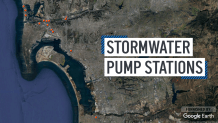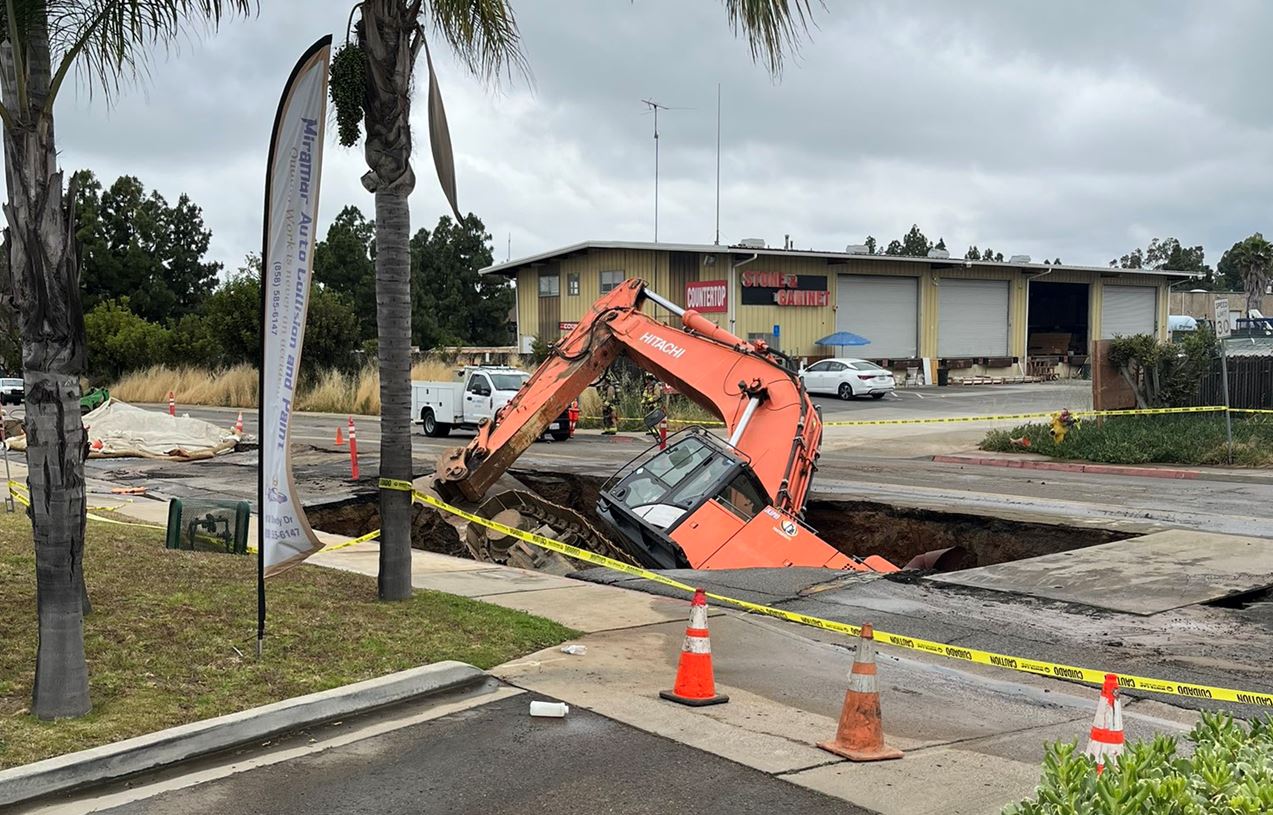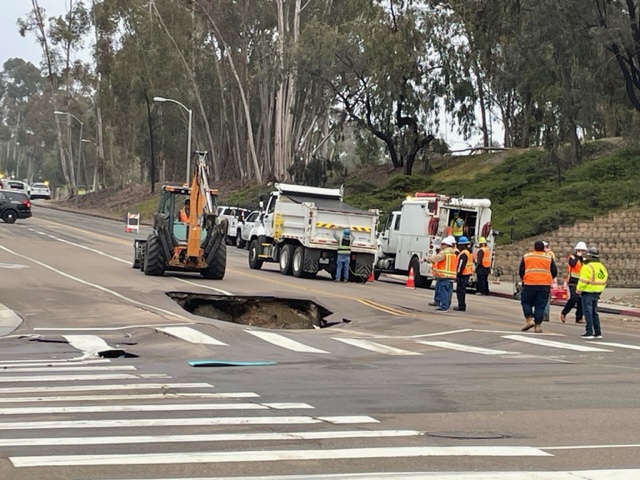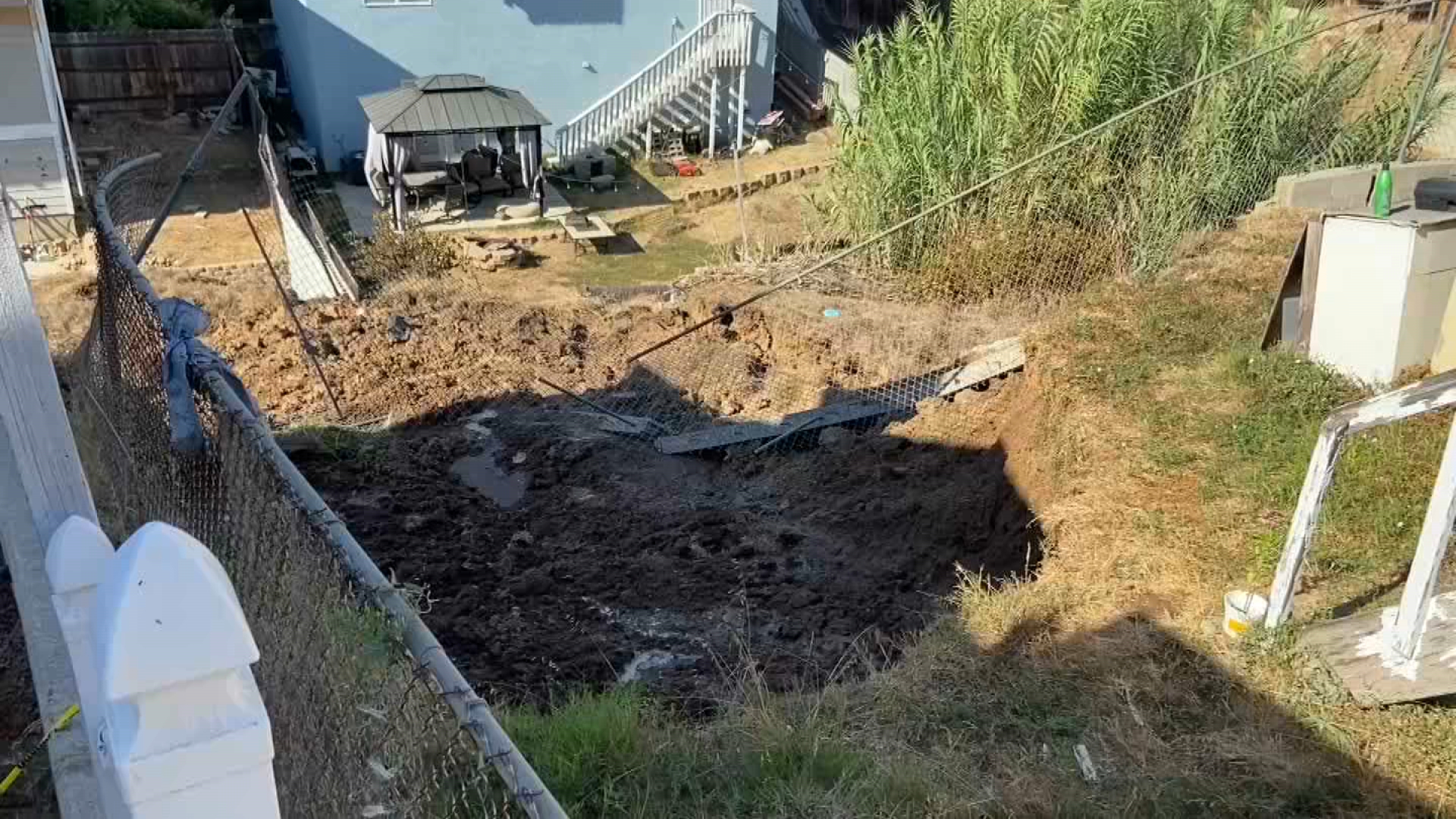Engineers with the city of San Diego say local neighborhoods are always one rainstorm away from disastrous flooding. They say it’s because our storm system is decades past its lifetime. And right now, they say, the city doesn’t have enough money to set aside to fix problems that keep them up at night.
Stormwater wasn’t as big a concern a hundred years ago, when there was a lot less urban development. In the past, all that green space absorbed the rain like a sponge, and storm drains took any excess runoff straight from our gutters into our waterways. But today, more of the city is paved over, funneling all that rain into the stormwater system.
Many of the issues we’re experiencing now are connected to the pipe failures. Most were installed 50-75 years ago and are made of corrugated metal. Now, underneath roads, many have collapsed. When stormwater doesn’t have a pathway out, the surrounding soil turns to mud and can no longer support the road, creating sinkholes.
Todd Snyder, the director of San Diego’s Stormwater Department, said the city's stormwater system is critical to protecting life and property. But right now, it’s not up to the task.
Get San Diego local news, weather forecasts, sports and lifestyle stories to your inbox. Sign up for NBC San Diego newsletters.
“Every time it rains, we are really, really vulnerable,” Snyder said.
Snyder said there were 20 sinkholes during last year’s rainy season. Those, coupled with other stormwater emergencies, cost taxpayers quite a bit.
“That’s over $30 million worth of public dollars taken away from other city programs to fund stormwater repairs,” Snyder told NBC 7.
That includes a sinkhole in Scripps Ranch this past spring and one last year in Valencia Park.
If we don’t start investing more into our stormwater system, the level of damage we’re going to see during every rain season is going to get more and more significant.
Todd Snyder, Director, San Diego Stormwater Department
Snyder said replacing the city’s aging underground pipes is a tall order that will require decades of work. He said many of the city’s stormwater pump stations also need an overhaul. It currently operates 16, most of which are in the Mission Bay and San Diego River areas. Some were built back in the 1920s. Most weren’t designed to handle the amount of stormwater the city deals with.
Senior civil engineer Michael Phillips took NBC 7 inside Pump Station G, one of four across San Diego the city says is in critical condition. It’s located near the heart of Pacific Beach, off Mission Boulevard. Phillips said it’s the worst in the city.
“The pumps are not working and that’s a big deal because that’s their whole purpose,” Phillips said.
Stormwater Pump Station G
Last September, Phillips said, one of the two main pipes funneling all of the area’s rain runoff into Mission Bay started leaking. A lot. Soon after, the pump motor inside the second main pipe stopped running.
“They basically both broke at the same time, which is like a worst-case scenario for us,” Phillips said.
Any standing water is especially problematic because, unlike other pump stations, this one shares space with the sewer system. That creates the potential for sewage to mix in with rainwater.
What is a pump station?

Broken pumps aren’t the only problem here, either.
“Water is leaking out through the walls," Phillips said. "Like I said, cracks are everywhere; water is coming through."
The city said structural integrity isn’t the only concern. The structure is so small, it’s only safe for three engineers to work inside at any one time, making serious repairs impossible.

What it will take to fix San Diego’s stormwater system?
City officials said it’s projected to cost $1.3 billion to perform a systemwide upgrade of the stormwater system. That includes redesigning and building pump stations, and replacing thousands of pipes. Back in 2018, a city audit estimated it would take 95 years to replace all of the deteriorating pipes underground alone. In the meantime, taxpayers are spending millions of dollars on short-term solutions, including hiring a contractor to set up auxiliary pumps outside Pump Station G. For that specific job, the city said, it’s costing about $22,000 per month.
Snyder said the city didn’t get into this mess overnight but it's no longer something we can ignore. Every year, he added, his budget falls short by about $300 million. He said that deficit translates to real-life risk.
“This is really urgent,” Snyder said. “We are really doing this because we want the public to know the severity of this issue.”
Earlier this year, during an NBC 7 Investigates interview for a different story, Mayor Todd Gloria kept bringing up the city’s stormwater system, saying it might not get the most attention.
“People notice a pothole,” Gloria said. “Not surprisingly, that’s what we get the most complaints about. The areas where I am very concerned are, specifically, our stormwater system, which is usually out-of-sight, out-of-mind until there’s a lot of rain, and then people wanna ask: 'Why aren’t we doing more on that?' ”
The city said it is doing something. It recently signed off on a $733 million federal loan. The EPA gave San Diego permission to use the money for pipeline replacements, pump station repairs and watershed restoration, over five years, but that loan won’t come close to paying for even half of the stormwater deficit.
Snyder said the solution will likely mean a new long-term revenue stream, like new taxes. That hasn’t been popular in the past. A 2020 ballot measure for exactly that failed to get enough votes. And there has not been serious talk of trying again.
“There's a significant cost of doing nothing as well,” Snyder told NBC 7. “And that really has to be factored into the equation. If we don’t start investing more into our stormwater system, the level of damage we’re going to see during every rain season is going to get more and more significant. That’s going to hit people’s pocketbooks.”
While city leaders figure out a big solution for this big problem, there’s something small all of us can do right now: Stop littering. Because stormwater is untreated, all the trash and filth ends up in channel ways or at pump stations, causing failures and flooding. Even more gets funneled straight to the bay.




